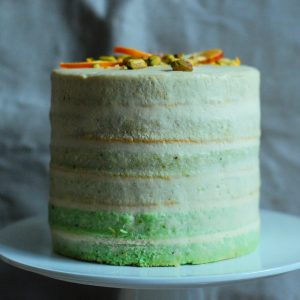It is a rather nerdy topic to speak on but I’ll try my best to keep it simple. It’s very important to understand, what happens in the process of cooking and how eggs and flour convert into stunning cakes, to get the best result of any recipe. So here is some advice to make all your bakes lighter, fluffier, higher and juicer.
All the cake recipes you use will describe different ways of mixing ingredients, but essentially there’s only one method that allows all ingredients to play their best part in batter (we’re not talking dough and pastry right now).
Let’s start with some theory. All your cakes are made from two mixtures: dry and wet. Dry mixture consists mostly of flour, but may include baking powder or baking soda, salt, cocoa, ground nuts… Wet mixture in professional language is called foam, because you incorporate a lot of air into it. The more air you mix in, the lighter will be cake, the higher it’ll rise. We can make foam from two types of ingredients – eggs and egg whites and fats. The wet mixture can also include sugar, milk, yoghurt, extracts, juices, melted chocolate, spirits. If the main foaming ingredient in recipe is egg and egg whites it’ll result into sponge. If the main foaming ingredient is fat (oil or butter) it’ll result into cake.
So the secrets are.
- Use two bowls. One for dry mixture and one for dry.
- If you are using cocoa or icing sugar – sift it, they tend to form lumps and make your batter uneven. I see no need to sift flour, though many cooks insist it’s a must.
- Spend no less than 6-8 minutes to cream your butter with sugar (if you’re making cake) or whisk eggs with or without sugar (if you;re making sponge). It really takes time to infuse some air into your mixture.
- Add sugar slowly, little by little. Fats (or eggs) are very elastic, but they need to have enough room both to catch air and to bond with sugar. If you add all sugar in one go the fat (or eggs) is most likely to bond with it leaving less room for air. And vice versa.
- After making a foam forget about mixer. Just don’t use it. Take the silicone spatula and whatever you need to add – mix it in with spatula.
- The technique of the most gentle mixing is called folding. Take the bowl by the farer edge with your left hand. Take the spatula in your right hand and position it in the bowl so that your hands meet in one point. Then turn the bowl with your left hand, scraping the sides and the bottom of the bowl with the spatula in the right. The hands should meet on the edge closest to you. Finish the movement with a turn of spatula from bottom to top, like you are wrapping the add-ins in the foam.
- Use this technique to mix in all the ingredients. It’s the one that helps to keep air in.
- It is very important to use folding when adding dry ingredients. Do not mix them in with mixer, because mixing helps to develop gluten. The more you mix – the more gluten you’ll get. I don’t hold anything against gluten. You encourage gluten development in bread, because it is giving the dough elasticity and nice texture to the bread. But with cakes we have a different story. Yeast we use for bread is very strong, it releases a lot of CO2. Soda and baking powder is much weaker. It doesn’t have the strength to stretch the chew-gooey gluten. So your cake will turn out flat and heavy and soggy (because there will be no air to circulate in the middle of the cake). So don’t do it to your cake! Don’t mix in the flour with mixer. Hand only!
- If using baking soda or baking powder, let the batter rest for 3-5 minutes before taking it to the oven. Sadly this will develop some gluten, but it is the time needed to activate NaHCO3.
- Bake in a well preheated oven. If the recipe reads 200C, it means it should be 200C at the moment you put your cake in the oven, not 5 minutes after.

